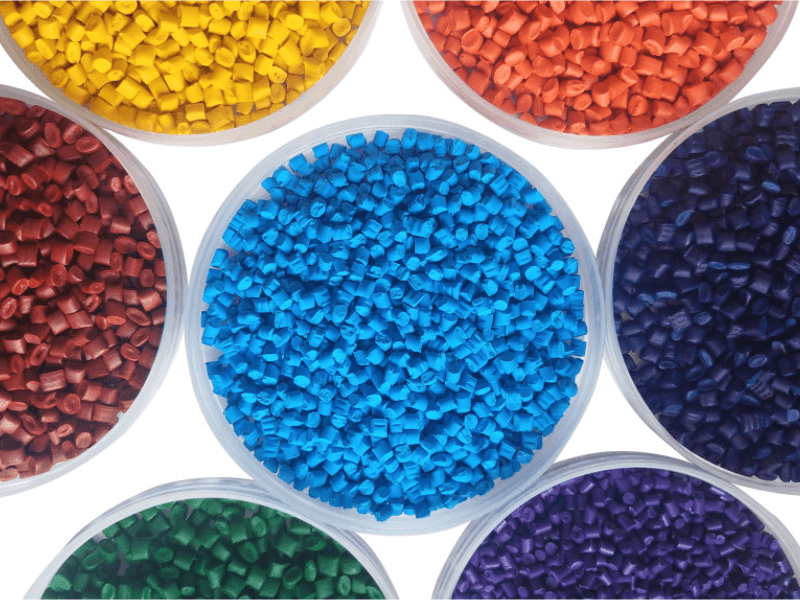
Types Of Plastic Used In Blow Molding Process
Types Of Plastic Used In Blow Molding Process

Blow molding refers to a molding procedure that the production industry employs to manufacture hollow objects composed of plastic. Selecting the appropriate plastic material for any blow molding process can be challenging. Strength, flexibility, density, cost, and more factors help decide which plastic material is suitable for blow molding. The blow molding capabilities expand to vast and small parts using multiple or single molds, including blow pin and air needle models. The exact blow molding techniques employed for a particular project depend on the design's desired physical attributes and complexity. Here is an outline of the drawbacks, benefits, and characteristics of plastic materials used in blow molding.
High-density Polyethylene (HDPE)
High-density Polyethylene is the first-ranked plastic in the world and the most frequently blow-molded plastic resin. This is because of its desirable physical qualities, high strength-to-density ratio, temperature resistance, and chemical resistance. High-density Polyethylene is employed in an extensive range of products, including consumer liquid bottles such as motor oil and shampoo, industrial drums, carrying cases, play structures, and coolers. It is molder-friendly, easily colored, chemically inert, and easily colored. The Food and Drug Administration has approved high-density Polyethylene, the safest plastic. A PP bottle-making machine helps consumer bottle manufacturers manufacture consumer liquid bottles with blow-molded high-density Polyethylene.
Low-Density Polyethylene
Versions of low-density Polyethylene encompass ethyl-vinyl-acetate and linear-low. Manufacturers employ low-density Polyethylene for softer items that require a high degree of flexibility or stress crack resistance. Usually, the higher the ethyl-vinyl-acetate content, the weaker the molded component is. Typical applications of low-density Polyethylene encompass boat fenders, traffic channelizers, and squeeze bottles. Low-density Polyethylene is also easily colored, translucent, chemically inert, and mold-friendly.
Polypropylene
Polypropylene is the second-ranked plastic in the world- it's a very famous injection molding material. Polypropylene is like high-density Polyethylene, but its slightly lower and stiffer density benefits. Manufacturers commonly use polypropylene in elevated temperate uses like medical components and dishwater tubes that need autoclave sterilization. It is molder-friendly, quickly colored, and translucent.
Polyvinyl Chloride(PVC)
Even though polyvinyl chloride is the third-ranked plastic of the world, Polyvinyl chloride has been intensely examined for utilizing lead and cadmium as stabilizers. It releases hydrochloric acids while processing and releases remaining vinyl chloride monomers following molding(most of these problems have been decreased). Polyvinyl chloride is translucent. It comes in soft and rigid forms- the soft material. Manufacturers usually use the soft version of polyvinyl chloride in blow molding. Typical use includes traffic cones, bellows, and delicate medical components.
Acrylonitrile Butadiene Styrene (ABS)
Acrylonitrile Butadiene Styrene is comparatively hard plastic. This ABS plastic is employed for injection molding football helmets. Blow molding standard Acrylonitrile Butadiene Styrene is usually colored for use and clear in small appliances and electronics housings. After drying, Acrylonitrile Butadiene Styrene molds well. Nevertheless, the chemical resistance of components composed of Acrylonitrile Butadiene Styrene is not like the chemical resistance of polypropylene. Therefore caution should be employed in using this plastic with ingredients exposed to chemicals.
Polyamides/Nylon(PA)
Nylon melts rapidly; therefore, manufacturers commonly utilize it in injection molding. The materials employed for extrusion blow molding are usually versions of nylon four to six, nylon six to six, nylon eleven, and nylon six. Nylon is an affordably priced translucent material that poses decent resistance to chemicals and gives a good performance in highly heated environments. Manufacturers use nylon to manufacture reservoirs and tubes in automobile engine compartments.
Co-polyester And Polyester
Manufacturers frequently employ polyester in making fiber. Unlike Polyethylene Terephthalate, manufacturers can do extrusion blow molding of modified polyesters such as co-polyester and Polyethylene Terephthalate glycol. Sometimes, co-polyester is employed to replace polycarbonate inside container products. It is like polycarbonate, but it is not that strict or precise, and it does not comprise bisphenol A, a substance that, according to some research, causes health problems.
Polyurethane and Urethane
Urethanes have performance qualities that are popular in coverings such as paint. Generally, urethane's elasticity is greater than polyurethane's, which needs to be formulated especially for becoming thermoplastic urethane. The thermoplastic standards can be injection or extrusion and cast blow molded. This is most frequently utilized as a single layer in multiple-layer blow molding.
Thermoplastic Elastomers
Manufacturers use thermoplastic elastomers to replace natural rubber inside molded components. This material is explicit and can be colored (usually black). Automobile manufacturers mainly utilize TPEs in grip surfaces, air intake ducts, bellows, and automotive suspension covers. After drying, it molds and usually reprocesses well.
